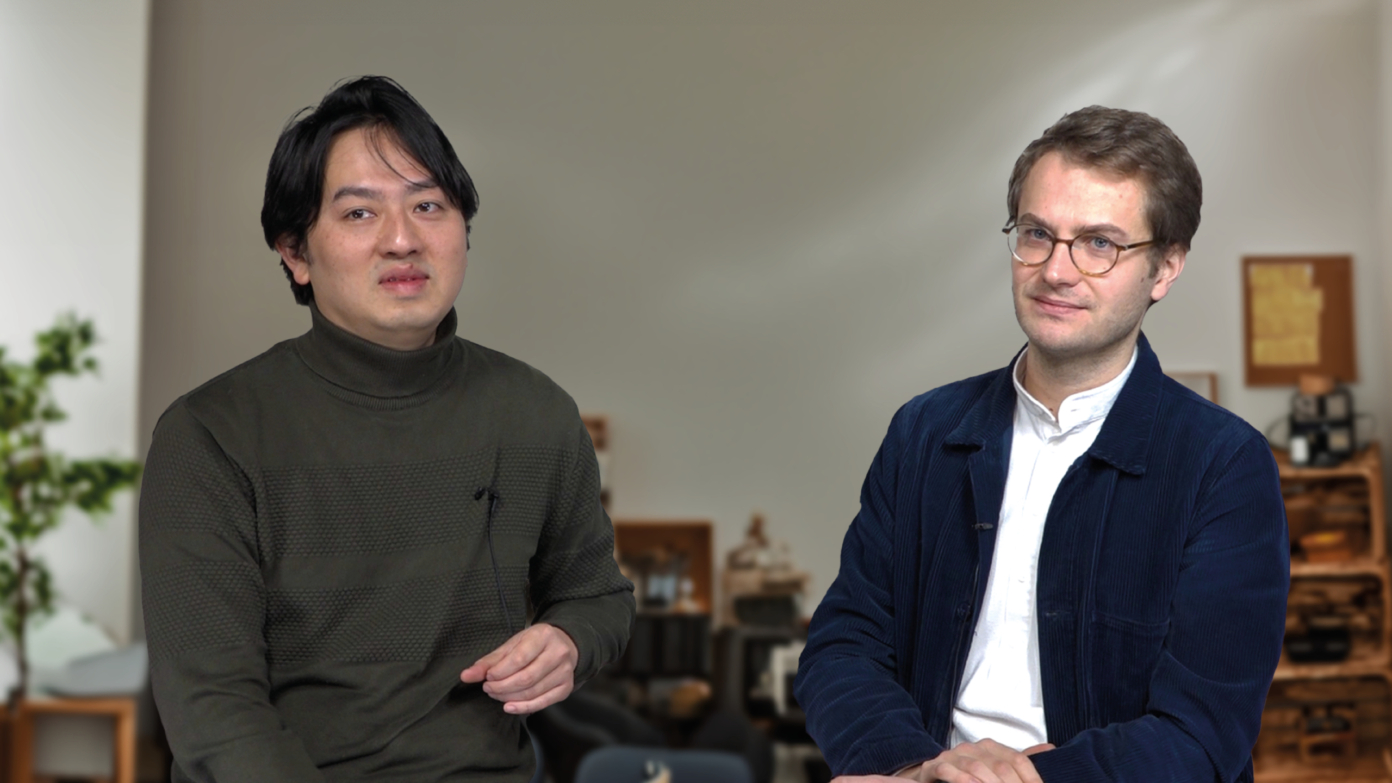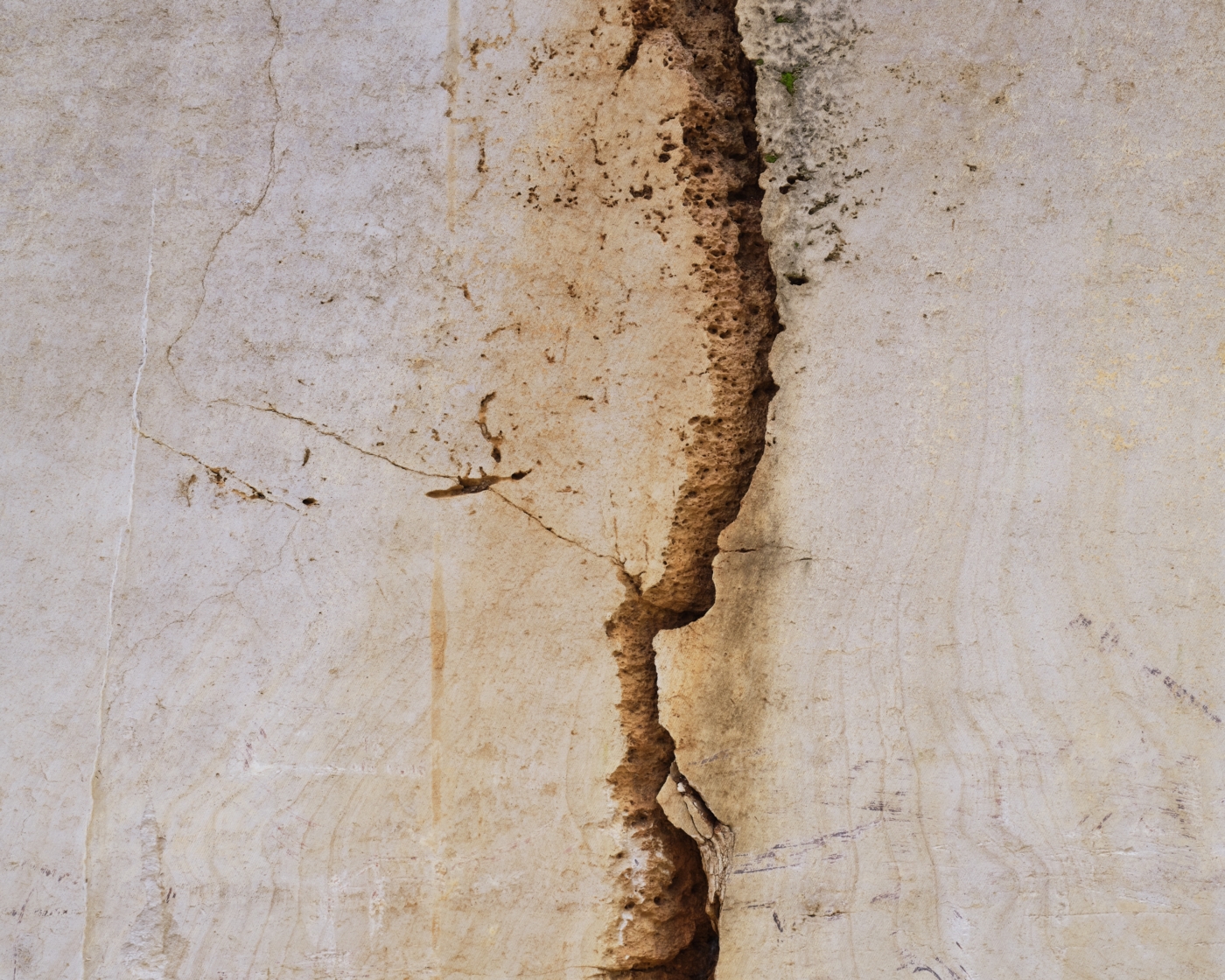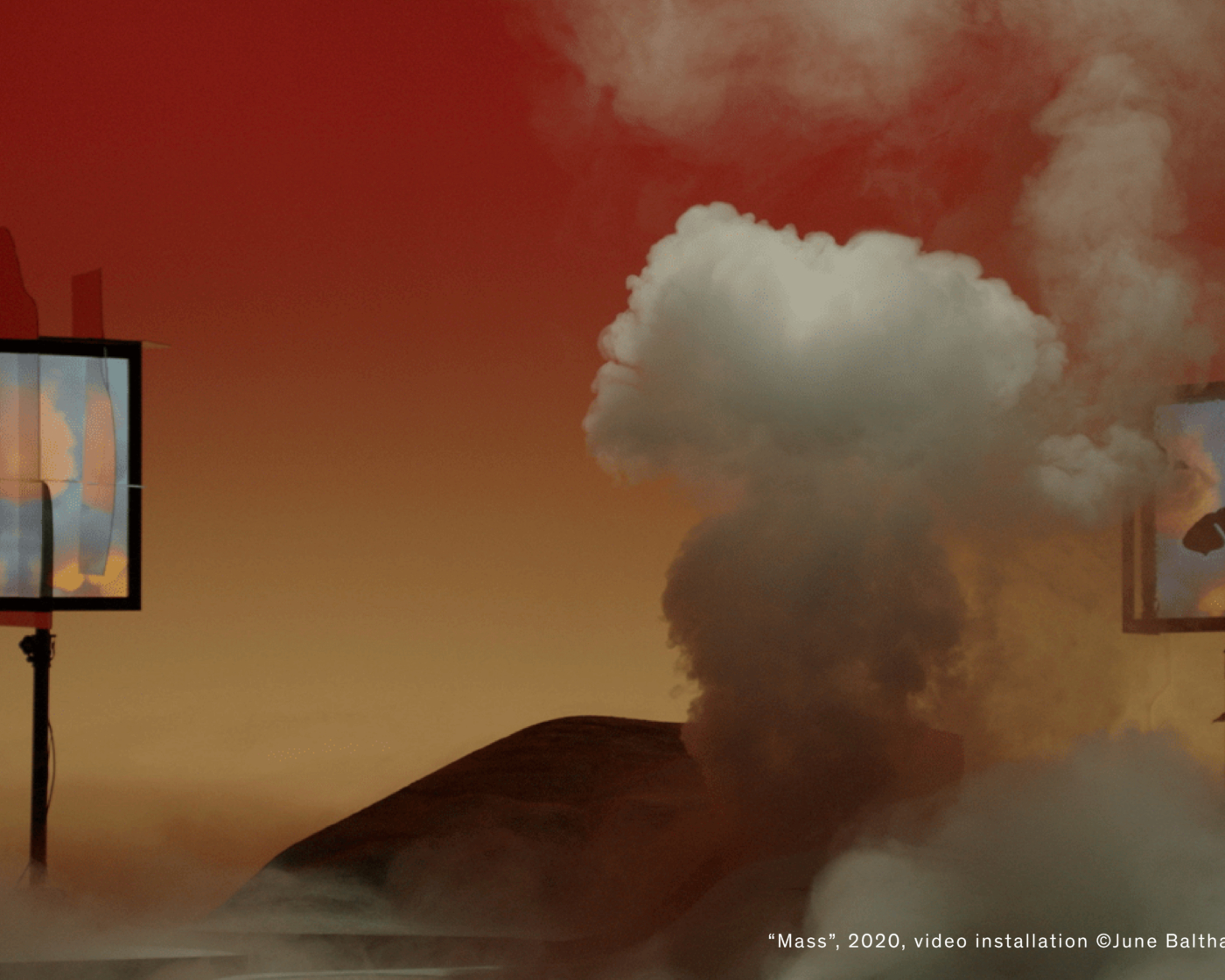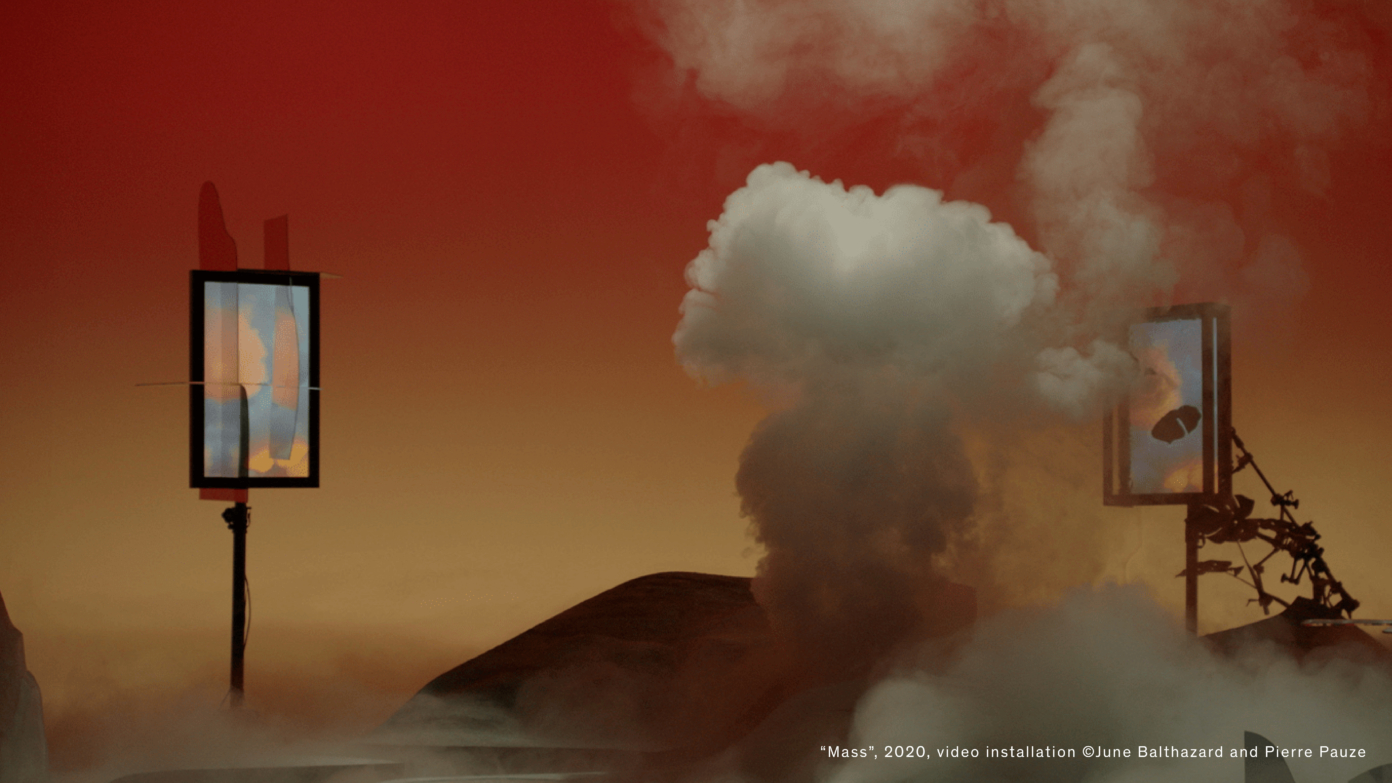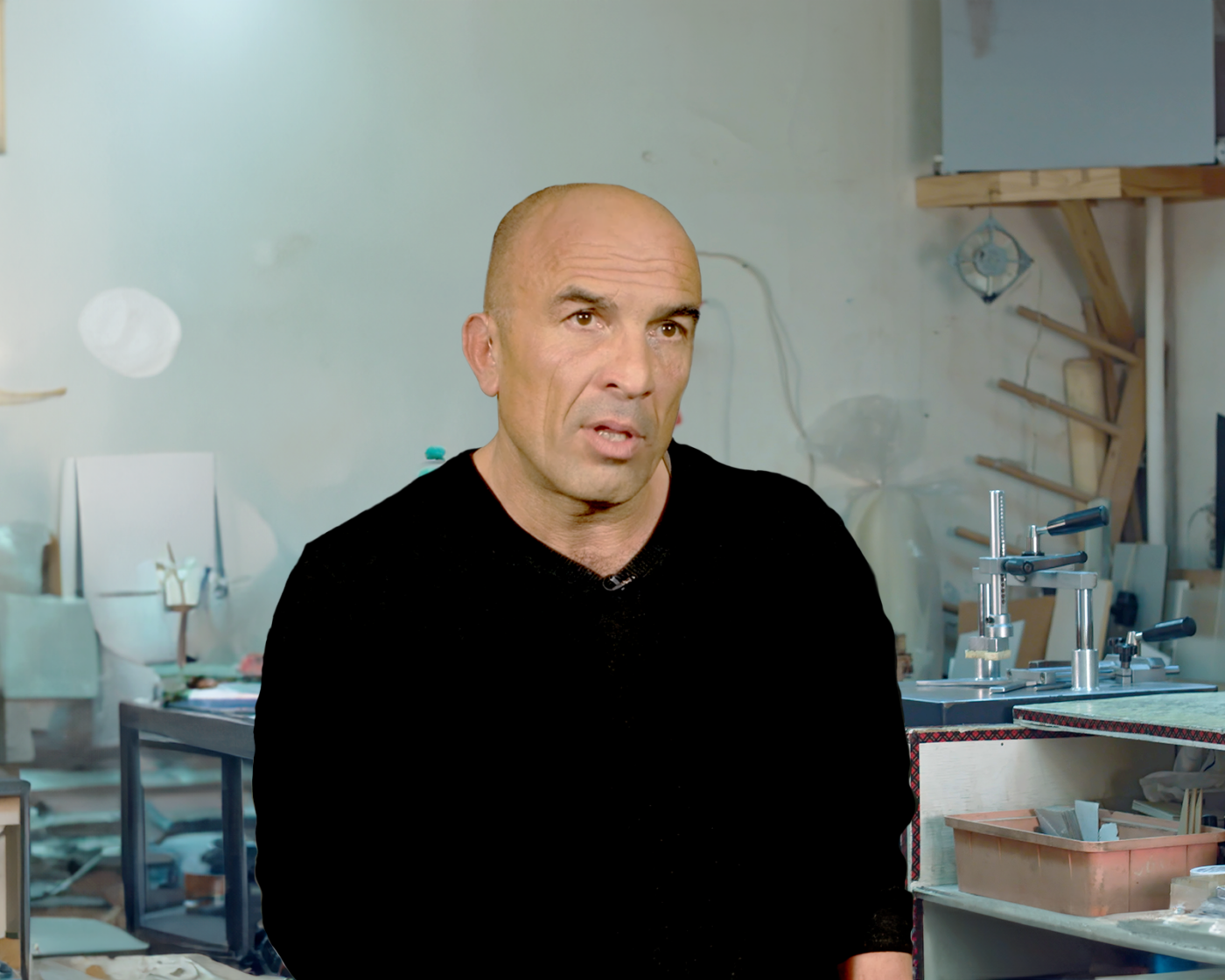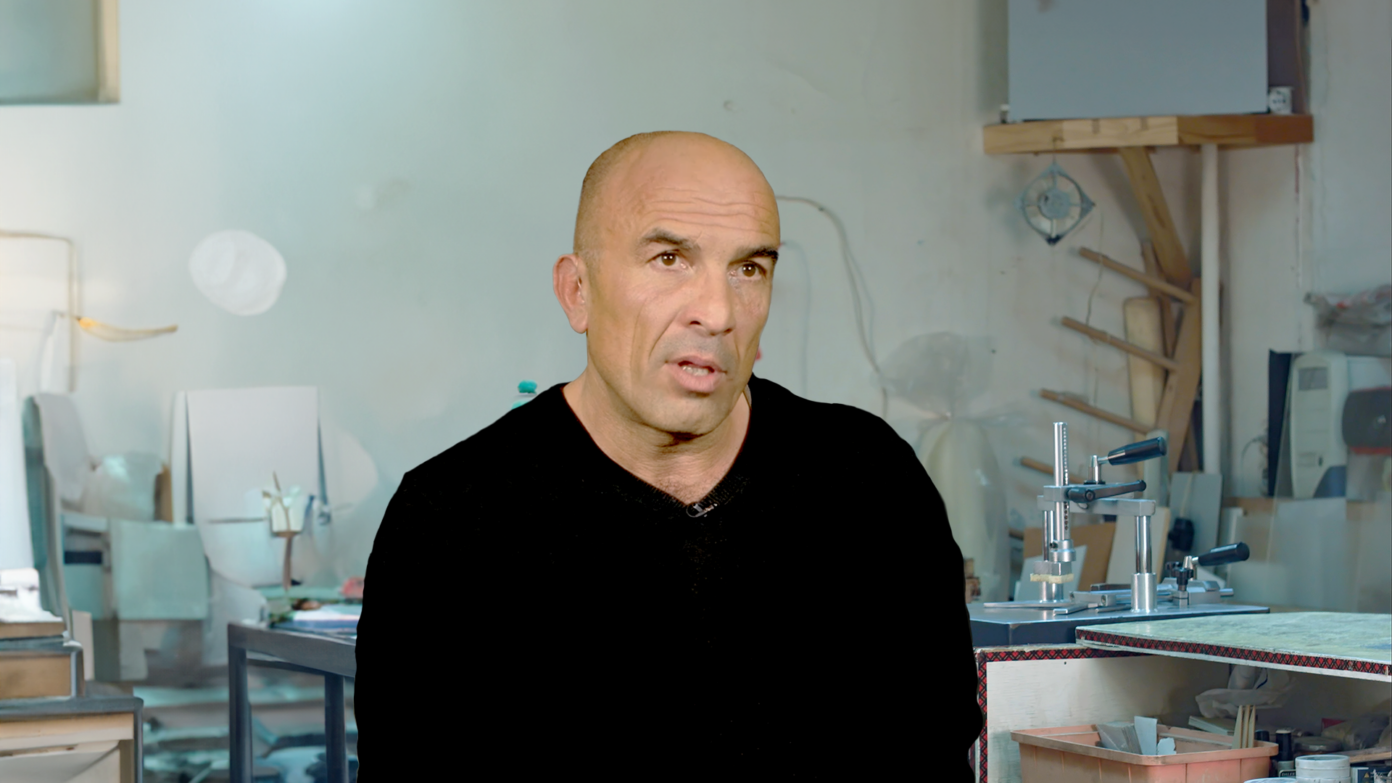Interactive Collaborations

- Publish On 19 April 2017
- Yann Moulier-Boutang
As early as the 2000s, Yann Moulier-Boutang discussed in his article for Rem Koolhaas’ Mutations the issues of cognitive capitalism, digital technologies but also the environment—a topic that has finally become pivotal now that it is finally perceived as problematic. He had already foreseen the return to a quest for meaning, which stemmed from the desire to find an approach to life that goes beyond the myth of progress and continuous growth, and to go on to live the “good life”. The destruction of the industrial era has accelerated and he now calls for an “ecology of thought,” referring to widespread urbanization and its main developments, including the consolidation of a “capitalism of intangibles” and the importance of externalities. He presents us with new conceptual tools to understand and to survive this state of complexity—most notably his concepts of “pollinization” and the “halo”, but also the importance of collaborative approaches, trust, and open data.
Yann Moulier-Boutang is an economist and essayist. He teaches at the University of Technology of Compiègne, at the Binghamton University of New York, and at Shanghai’s UTSEUS Complexcity laboratory.
This issue of Stream is devoted to the changes in our global urban condition, particularly over the past decade. I wanted to interview you as your text in Rem Koolhaas’ book Mutations is very striking. In this piece, you spoke about cognitive capitalism but also about digital technologies and the environment, which is one of the things which has changed since that time, in the sense that the environment was not a major issue at the time. Do you perceive this evolution ?
Yes, ecological thought already existed at the time but sustainable development wasn’t that much of an issue. For leaders, it was only on the horizon, not something which could cost them their job, as is becoming the case now. I think that there has mainly been a generational shift towards living well. Our generation lived with the model of the postwar boom years of Western economic development, which, although not on the level of what São Paulo is experiencing right now, was leveling out inequalities thanks to a 5 percent growth rate. Society coped with technical progress and this was fundamentally an “acceleration of history” which was well handled. Since then, with the energy crises and the collapse of the socialist utopias, we are turning to the idea of living well, which is compatible with a quantitatively fairly low growth rate. What is needed today is quality-intensive growth, mental growth—something like an ecology of the mind.
When we compare the present to to the beginning of the 2000s, we can see there has been a radical structural change in the acceleration of the destruction of the industrial era, of productive fabrication. Cities are becoming warehouses where flows of goods and information are stored without physical transport. This cognitive capitalism which was still developing in the year 2000 is becoming dominant, up to and including in China, the world’s factory. Serge Tchuruk kicked up a fuss when he talked about companies without factories, but that is precisely the reality we are seeing unfold right now at great speed. Even countries which have inherited the blue-collar sector are now turning to living well. That’s where the true acceleration of history is. We’re seeing this in Bangladesh and in China, where negligent urban planning combined with a total disregard for social legislation has led to tragedies which will leave their mark. I was still hesitatant on the subject when I wrote my article in Mutations, but I now think what is important in cities with no direct material product is that they are composed of different strata. It started with the crisis of the three functions of Fordism (work, rest, leisure)—these were increasingly blurred but the reasoning was still Cartesian. Nowadays however, the creative classes are pushing for having leisure, work, communication, and housing functions within the same building, which is probably a factor in the vertical growth of cities, beyond the interests of real estate speculators.
Cities are therefore composed of layers, and we could imagine platforms and horizontal thoroughfares at the top of high-rise buildings. In fact, there are three layers: first, the ground level, with the material infrastructure; then, that of services and offices; and finally, the equivalent of the cloud, i.e., everything which was already circulating in our brains, in art, and all these forms of knowledge which are, in turn, spatialized, temporalized, and materialized as they circulate. The acceleration of this flow within the network contrasts with the congestion in the physical layer. We already had teleworking and videoconferencing, but now things have gone well beyond that: a sort of gigantic collaborative platform is emerging—people aren’t collaborating within a given physical place, factory, or office, but by means of their brains, via the prostheses of the computer and the terminal, and that is how the data cloud is materializing and taking shape. Of course, all the issues of control, leaks, security, and trust happen at the level of this layer—in other words, the layer of what I call “type 2 intangibles,” those which don’t allow for easy codification.
Making cities now amounts to gathering these three elements. The urban space isn’t simply vertical, but striated, and has become formally and materially complex. Up to now, mathematics had tended to reduce anything complex to something complicated by trying to fraction it into a sequence of problems and then to solve these through the use of stastistics or other mathematical tools, analysis, etc. But the other way of solving complex problems is to forge ahead, moving from a three-dimensional space to a n-dimensional space. We don’t generalize by projecting the three dimensions on a plane anymore, we are making a meta leap by shifting from an x,y-plane to one with n dimensions. That way, we acknowledge complexity by processing it with more complexity.
Let’s take a complex problem such as that of coordination between people, which requires a much more multidimensional form of cooperation: in turn, the latter requires a certain level of trust and so on, until we reach the meta-level of the conditions of possibility (the Kantian method), even if this means that, once that last stage is reached, we should no longer rely on categories and intuition but on transcendental imagination, on the dialectic of understanding, on practical reason or the judgment of taste. In our present case, facing the new urban challenge requires us to base ourselves on our capacity to innovate and create, which can in turn, only develop following a set of conditions which are themselves based on on a complex ecosystem. The urbatect, who is building the urbs (the city) and not simply the domus (the house, the building), must then forbid himself from using the direct method and favor the indirect method to imagine, shape, and act on the conditions for creativity. This ecosystem is a living one: it requires a certain level of energy, of exchanges, a pressure difference with what is outside it. This ecosystem is complex in the same way that a cell is complex, inasmuch as it is in constant interaction with an outside world which can spawn disasters or radically new events. My vision of urban realities stems from this approach of complexity, and since the publication of my article in Mutations I have stood by it. It even seems to me that the different crises have reinforced the trend.
Complex city, crowd sourcing and serious gaming
Could you tell us exactly what your research on the idea of a complex city is about?
My project seeks to understand how, before even registering or processing the variables of complex cities, they can be identified without mutilating them or carving them up into inert slices. Given that the city is a continuous emergence of new variables which are embedded in new determining behaviors, this seems to be an endless task worthy of Sisyphus. Paradoxically, we are carrying out our research through the detour of computing, crowdsourcing, and the application of this principle to “serious gaming.” Crowdsourcing consists in looking for the solution to a complex problem, not by taking an overarching position (design seen from above), but rather by facilitating some elements to a large number of stakeholders and hoping that their interaction will bring about virtualities which weren’t initially there (in the way the germ is contained in a seed). Architects and urban planners aren’t demiurges anymore, nor are they the performers of the will of the despot, the master, the Prince—whether he is a Pharaoh or the state—they are there to contrive devices and facilitate the interaction of the multitude.
We must appreciate the fact that we presently do not have available the relevant variables to run a city which has reached the cognitive level of capitalism. The former variables on which we acted by increasing this or that aren’t responding anymore because there are multiple interactions with instant feedback loops. In that respect, cities are similar to financial markets: the instant interactions of all agents put together generate “black swans,” in other words, unprecedented and unpredictable events, in both good and bad ways. Yet the problem of governments has always been to try to foresee unpredictability, risk, riot, for instance through simulations and drills of acts of terror or epidemics. But in a complex city, it isn’t possible to base policies on clearly ex ante identified variables because these can’t be identified by means of conventional surveys anymore.
Indeed, polling would be much too expensive and what polling agencies are producing isn’t reliable due to changeability. Our idea is therefore to identify emerging behaviors and to build upon them, offering platforms of activity and pollination to people, particularly in the form of serious games: we build scenarios, have people play them, and the secondary data they generate during the gameplay breaks down the conventional barriers of polling. Instead of only taking interest in subjects by building questions, in this case we are interested in everything that makes up the halo surrounding things and forms. As a matter of fact, I am in favor of halo architecture.
Intangible and the concept of halo
Can you define this concept of halo architecture more precisely ?
It is based on the idea that in a complex city, complexity originates in the increasingly strong interaction of hundreds of thousands, possibly even millions of variables. When we have such a prodigious level of interaction, statistical forecasting methods are useless. In the classical bell curve representation of phenomena, the mean and the standard deviation provide enough indications for decision-making because more than 85 percent of the phenomena are captured by these aggregates, leaving only the extremes, the lower ends of the curve which only represent some 15 or maybe five percent of marginal things we can therefore ignore. In the country of Mediocristan, in the words of Nassim Nicholas Taleb in his book on black swans, we are confronted with bell-curve situations, but in the country of Extremistan, on the contrary, there is a polarization to extremes and nothing at the mean, so the mean doesn’t represent anything and standard deviation is excessive. As a result, governing by the mean isn’t possible anymore.
In the nineteenth century, analyzing the breakdown of population by income to identify social classes in a context of class struggle made it possible to identify dangerous classes and to distinguish them from the lower-middle classes, the upper-middle classes, and the upper classes. Government was based on a balancing act between these classes—for instance, Haussmann corrected the differences between the east and the west to make Paris possible to rule by restructuring the east and the southeast of the city. But the fundamental idea is that, at the time, classes could be identified whereas today, with cognitive capitalism and the creative classes, things are blurred. The income variable doesn’t provide enough information and we have to take economic insecurity into account as it also affects part of the creative class despite it being the best equipped in Bourdieu’s sense. There are highly varied and potent occurrences of bipolarization, which also apply to bobos. The weighted average isn’t at the middle of the bell curve anymore; there is no middle range of stability and harmony anymore, no middle class, which is why is is so important to look for the impact of externalities. The idea of pollination also emerges from this observation: the bulk of the subject is invisible, implicit, outside the inner core; the important elements are the externalities, i.e., contextualisation, interpretation, meaning, and these aren’t codifiable.
There is an overlap with the notion of value. Let us draw an analogy with an ecosystem: Pascal Picq explains that in the event of a major exogenous shock, of a black swan, the more an ecosystem is rich and has unused dormant resources which can be mobilized in order to deliver a response, the better its chances of survival.
This may apply to genetics and many other things, such as the ability of populations to resist a virus or an illness. In nature, when an ecosystem is depleted, the number of animal and plant species falls and susceptibility to disease reaches alarming levels. This explains the devastation and overmedication prevalent in industrial livestock farming, and why agriculture in the United States but also in Europe, is in a deadlock, caught up in a very advanced cycle of poisoning of the soil and the destruction of biomass.
Honeybee colony collapse syndrome is another translation of the same reality. A rich ecosystem is necessary, with lots of strange things which are seemingly useless (such as “maverick toads,” which don’t follow typical migration routes) but are in fact evolution’s security exits. But from a cultural standpoint, the same thing occurs: the ability for a complex urban environment to thrive depends on its heteronomy, its extraordinary variability, which enables it to adopt strategies of resilience. On the contrary, in highly planned homogenous environments, subjects are dealt with without considering induced effects, which makes them terribly fragile to unforeseen events, our black swans. The digital revolution has the same negative effect: it clearly binarizes things and provides us with a formidable planning tool (something which already had the tendency to reduce complexity to complicatedness). That being said, by automating many logical brain functions, digital tools also highlight the fact that, in the end, intelligence and innovation are what really matters—in other terms, our capacity to respond to questions which haven’t been previously programmed and to solve complex problems. Computing power and big data are nothing without intelligence, without the ability to find solutions to complex problems. Today, this is the ability which has value from an economic standpoint. The added-value comes from grasping complexity, which is possible only by taking into account the externalities, the hidden tip of the iceberg, all that resists the traditional evaluation criteria used by the market and conventional science.
As a matter of fact, sustainable development is all about reintegrating this hidden face of externalities back into economic calculations and the identification of solutions: encouraging positive externalities of pollinization, be they by humans, animals, or plants, and of course, minimizing negative externalities. That is why I accord so much importance to the halo: it concentrates what I call the “type 2 intangibles,” i.e., what isn’t codifiable—trust, care, or intelligence. There is the zone of material production—limited to a very small circle—and then the type 1 intangibles zone—intellectual property and the codification of services—and, lastly, the “type 2 intangibles.” It is soon apparent that this final zone is the most interesting one because nowadays, it is the one which enables the whole to function. We have shifted from coordination—a perfectly Fordist system made manageable by the use of schedules, the division of labor, etc.—to cooperation, which is intangible and cannot be codified, just like creativity. Creativity cannot be commanded—that would be a complete disaster—and the phases of creativity cannot be formalized. The temporality of creativity isn’t homogenous, Cartesian, and scalar as space is—it is a n-dimensional time, a Möbius strip whose effects and complex mechanisms cannot be codified.
This halo concept you expand upon is really fascinating for architects because these days our biggest challenge is indeed not to plan but to encourage creativity, to create a set of conditions which fosters or accompanies the process of grasping complexity.
Yes, indeed, because it isn’t possible to plan this type of interaction. Once we’ve understood that, the issue is then knowing what to do from a pragmatic point of view. At this stage, I like to point out that the word “management” was coined during the sixteenth century from the French “ménager” before being adopted in English. And I find “ménager” (to spare, to conciliate) or “aménager” (to rearrange, to adjust) much more relevant than “to manage,” which implies a hierarchy, a top-down approach. “Ménager” is the encounter between the impulsions we want to give from above and the tradeoff we make with creativity, which works from the bottom up; it’s the way these two sides tame one another, co-act, and interact without us being able to determine beforehand which solutions will be reached. This is something which is fairly complicated to do because, if we take the example of the partnership between a Chinese firm and a French firm with intellectual capital, we blindly believe that it is simply a matter of patents and reaching an agreement over copyrights and exchanges of patents. Yet, it is precisely what is essential, the implicit in these technological transfers, which cannot be codified: how should we take into account the know-how, the network, the intellectual capital accumulated by a company? That’s something which forms around the brand, but not only, because what underlies it is trust. So, if we wish to “ménager,” to try to capture type 2 externalities, these impossibly-difficult-to-codify intangibles, it is necessary to establish a climate of trust, an innovation ecosystem. These ecosystems can be administered and adjusted, but they are fragile and highly complex. Consider, for instance, the evaluation of interpersonal skills beyond knowledge or know-how.
Particularly because trust is eroded so easily.
Precisely. It takes an inordinate amount of time to build trust and it can evaporate in an instant. Just as in a couple when there’s a “betrayal” and suddently they switch from love to inventorying things, allocating costs, distributing chores. So, putting a price tag on and codifying these intangibles cannot happen in that way. It is about taming creation. What is the ecosystem of a strong company? Why does it thrive? Due to a strong climate of trust, or at least the establishment of ranges of trust, given that these aren’t eternal of course. But to establish trust, it is also necessary to know what people are doing and to allow them some space for genuine autonomy, even if it isn’t in the sense of Big Brother, Bentham, or Foucault’s panopticon, etc. It is necessary to create moments when trust is established, notably through game play, because standard transactional market relations don’t necessarily instill the required level of trust—there are regulations and contracts for that purpose and the only moment when trust must be relied upon exclusively in such a context is credit. So all this trust zone we’re trying to bring about in fact mostly comes from the phenomenon of human pollination, and games are a good example of this.
About the heterogeneous : in cities and populations
That explains the importance of serious games in your research. This echoes what we’ve explored in Stream 2 in particular, the fact that we are entering a form of capitalism where innovation is overcoming organization, or at the very least where organization must change, shifting from management to “ménager” in your words.
Yes, adjusting and taming. I am tempted to say: to surviving in a context of complexity. Evolution is about intelligence. Surviving, conciliating, finding compromises, being capable of understanding what isn’t self-explanatory. In that vein, Richard Sennett often says that cities are wealthy in proportion to their ability to live with complexity and heterogeneity. Cities which don’t survive and those which are going to get poorer are those where different communities become ghettos, something which quickly leads to intolerance. That’s one thing Richard Florida has perceived well: one of the main characteristics of the creative class is tolerance.
For instance, in Brazil the creative class now wants to live in the favelas, whereas the bourgeoisie is locking itself up in condominiums with military protection, which leads to a negation of the city. It is becoming is a social determinant: it is possible to determine whether someone is creative or not according to whether he accepts to live in a socially heterogenous environment. Paris is still considered one of the leading student cities in the world, precisely because it has maintained a certain level of heterogeneity, that its population isn’t exceedingly stratified according to income, political opinion, or language. Sennett demonstrates well that this is what urban complexity is about and what makes the wealth of cities. As soon as this characteristic declines, cities lose their ability to respond to key economic challenges—the main one being the environmental challenge of course—but also to secrete appropriate responses to phenomena such as terrorism.
Given that you mention the creative class and that the issue of the environment is coming back into the conversation, I would like you to tell us more about this idea of an ecology of the mind you were mentioning earlier on. What relationship do you see between solving the environmental issue and the aspiration toward living well ?
The key point is that we are experiencing a paradigm change where this quest for the good life is superceding the obsession with net revenue growth. That leads to a form of slowness or inertia in material life compared to the rhythm we had become accustomed to. If something now has to be accelerated, it’s the ecology of the mind, and only then to combine it with the ecology of matter. To find solutions to the issues relative to sustainable development, we will require a lot of collective intelligence, and, as a matter of fact, that covers the sectors cognitive capitalism has identified as being productive forces.
Nowadays, we are finding solutions through crowd design, including in the field of science, as is the case for folding molecules or the fight against AIDS, in a game with a variety of players. That pushes us to make full use of the digital revolution, and, at the risk of sounding somewhat harsh, not losing time and resources in saving companies which will shut down within ten years no matter what business recovery plans are carried out. It would be best to focus on creating new forms of wealth and to implement a homogenous universal basic income, which would solve the problem of increasing inequalities, than to continue this absurd system where the welfare guarantees are based on the assumption of full-time and lifelong employment in a declining manufacturing sector.
These socioeconomic and environmental challenges are connected, and they are bringing about a complete change to the system, a shift towards a new relationship to porosity. Change is really necessary. Let us take another example, the measurement of creativity or innovation, which we have seen are becoming something central and are now the distinguishing feature of creative classes. It isn’t presently measured, or very poorly, because we are basing ourselves on “conventional” working hours. Yet a large part of this creative class is working much more than typical office hours and, quite crucially, we are not talking about the same temporality either, because this time isn’t homogenous. Could we use instruments to measure intensity at work? That seems difficult. And at the very same time, the situation is becoming absurd because this duration is still operating at many levels—at the occupational level or for retirement for instance. In the industrial world, if we are to except arduousness, correlating active years to the age of retirement seemed to be both logical and quite fair. Today, we are in a situation of complete injustice: a contemporary intellectual worker starts earning a living very late in life, after a tumultuous process which lasts roughly from age 15 to 35 and during which he earns a pittance—the idea of having him stop work at the age of 60 or 65 therefore seems ludicrous. But of course, classes aren’t homogenous, and having a general law stipulating that work should be allowed for each and every one of us until a ripe old age of 80 isn’t possible.
In France, the highest level of life expectancy for men is reached by professors of philosophy at a university level—speech is good for the health. On the other hand, having farm workers work until the age of 60 instead of 55 when their average life expectancy is of only 62 years, that’s terrifying of course. Again, we are facing the complex issue of heterogeneity: how is it possible to rule a perfectly heterogeneous population? Universal thinking is undergoing a crisis: is a law which is applied equally to all still a sensible law? Haven’t we reached a point where we should be building a new form of universalism, not in a top-down way but rather through a universal bottom-up approach which produces specific solutions?
I have no general vision of what that would be like, but regarding the issue of retirement for example, it seems fairly clear that we should be looking into having people retire when they want after a given age—or even not to retire at all if that is what they want—rather that imposing a solution which would apply to everyone in the same way, because there is a whole caegory of people enduring the fact that their exit point is imposed on them. And even today, people are tired, etc. What I mean is that, without going to the point of singularization, the greatest progress in terms of health and life expectancy is yet to come. At the beginning of the twentieth century, average life expectancy in France was around 50 years—this is something quite difficult to grasp, but upon reaching the age of 50, half of each generation would have already disappeared. Nowadays, French women have a life expectancy of nearly 84 years and slighty less for men, but in 2030–40, we are going to have hundreds of thousands of centenarians throughout the world—this will be an unprecedented change, the generalization of something which only existed for an elite. But even though the weight of healthcare expenditure will grow, we are set to experience a generalization of “viable” centenarians, which has some fascinating urban implications. In my university, in China, we have a program called the Complexcity Lab, which is working on these issues, on the way global demographic changes will impact the very foundations of urban planning and architecture.
The living and the relational
What is indeed quite clear is that the changes in our condition are forcing us to rethink our approach to architecture and urban planning, probably towards more complexity, in the sense that we are shifting towards an architecture which will be more capable of adapting and changing. And one of the potential approaches we are noticing in experimental architecture is the metaphor of biological life, the idea that we could find some inspiration in the complexity of natural systems. I would imagine that these are questions you are interested in ?
Yes, I worked on them with Aldo Rivkin and have discussd them extensively with other architects. I could start by highlighting the equivocation of biomimicry in architecture, because even though the metaphor of the ecosystem is interesting, for instance in the field of scientific research, in the case of urban planning, architecture, and more generally, form, it doesn’t lead to anything. I think the reason for this has to do with a symbolic and purely iconic line of reasoning and not a paradigm of enaction, where perception is a construct. I mean that what is important in an ecosystem, as in any system, is negentropy, dormant ties, faint signs—basically what Nicolas Bourriaud calls relational aesthetics. These aesthetics are abstract, in the sense that the relationship between two beings, especially if they are alive, produces things, but that relation itself isn’t visible. There are signs, but which cannot be represented, photographed, just as in an icon. So iconic, or symbolic, and calculating rationality isn’t enough. What we find is that it’s enaction or the primacy of the relationship, which will determine the players but also the means at their disposal. For instance, in the case of a smartphone, what counts isn’t the technical object, or even, strictlly speaking, its power, but the fact that it makes it possible to connect oneself to social networks. As a matter of fact, iPhones were much inferior phones than Nokias for instance, but their marketing was based on the relationship from one consumer to the other. We buy smartphones because they are connected to the social networks and these don’t have a conventional use but are geared towards sharing. People on these networks aren’t only consumers, but users, pollinators on the social network’s platform.
People share their photos, exhibit their travels, their choices in terms of music and books—it is a sort of generalized pooling of things, a relational activity. So what forms do these relations take? Of course, for starters, there’s a completely material medium—tubes, fiber optics, an object that is produced (which raises the question of rare earths by the way)—but when we talk about a network, a network city, the fact that cities should be modeled on networks, we are at a purely decorative level, not conceptual or signifying. It’s an architecture which will for instance produce windows shaped as leaves, use plant-inspired features such as ribs—simply copying, and basically it’s the green way of doing decoration: daubing an industrial wreck with green paint, etc. But we can’t say its biomimicry, because, as Aristotle already put it, when art imitates nature, it elevates it to another level. Genuine biomimicry is a non-iconic form of biomimicry, one which looks into understanding the phenomena underlying living systems.To take the example of form and the generation of space, Christian de Portzamparc once told me that what he found to be a sucess in the conservatoire of Paris’ Cité de la musique was not the music halls and rehearsal rooms but the common spaces, because the students take ownership over them, settle there, and inhabit them. Just as we say a public square is a success when people immediately start to concentrate there, as in the case of Beaubourg for instance. The idea is basically to create a pollination platform—the spaces must be made livable, i.e., appropriatable, not by a given person, sponsor or patron around whom an ideal and personal space would be formed on the basis of his unique tastes, but to create a common space to be shared by a large number of people who will feel the place and spontaneously inhabit it.
For example, we don’t feel comfortable in the large Bibliothèque Nationale de Paris, with its perfectly symmetrical spaces, its massive and fully carpeted railway station-style corridors which convey no emotion. This is the complete opposite of the room in Berlin’s library where Wim Wender’s Wings of Desire was filmed—which happens to a structure which is not symmetrical. It’s another matter altogether, but I think symmetry doesn’t work because, despite what we tend to think, human things are never ruled by symmetry, except in a purely superficial way: nothing is more assymetrical than a body or a face. A space is necessarily dissymetrical; otherwise it cannot be oriented. Symmetry causes us to get lost—we cannot have any visual cues because orientation is a differential phenomenon.
In the case of design and architecture, once we understand how living systems work, the idea is to imitate them in their principle but not in their outcomes. There’s no point in simply copying, doing classical biomimcry. And there are some egregious elements in the biological world which are seemingly useless—redundancy for example. That’s the big difference with functionalism, which leads to stating that if a human being doesn’t need his appendix or his tonsils, then they can be removed, including preventively. There was a time when surgeons would unsparingly remove the appendix from people such as travelers to the Amazon or submariners, in order to prevent peritonitis. But we now know these organs have some very important functions—tonsils bait and trap viruses and the appendix may act as a safeguard for the digestive system. There are no useless species in a biological environment, nothing fundamentally redundant to the point of uselessness, and at the end of the day, minimalistic functionalism weakens and fragilizes systems, increases their exposure to death. I think that is a principle which can cause an architectural upheaval. It’s a grand tradition, the way baroque architecture was disciplined by neoclassicism, which in turn led to modern functionalism after the decorative phase of the nineteenth century, when the true functions were hidden behind decoration. The fact remains that the functions of buildings are essential and thus decoration becomes substantial. That is something which has aesthetic consequences on projection, on time.
Regarding form, the real question is seeing how architectural virtuosity, along with digital virtuosity, becomes real, exposes the system, in the same way that good literature exposes the language, the system behind language. Architectural virtuosity reveals externalities and makes visible the inner workings of complexity. Considering the past forty centuries of Euclidian geometry and the invention of perspective, the ambition is to manage to materially translate a notion to a space with more than three dimensions. Human perception has been modeled by a culture which processes complexity by reducing it to complicatedness. At a time when we are presently recovering our taste for complexity, for instance in the attraction to archaic forms and outsider art, my idea would be to try, through form, to introduce, to consolidate, to extend, to spread, to convey a culture that deals with complexity through complexity and not by reducing it to complicatedness.
That’s precisely what our research is about, on how to go beyond decorative biomorphism and natural patterns and trying to reach the complexity of living systems thanks to present-day computational power, which really enables us to model systems and thus not to be captive of a priori form.
And we can scale back afterwards. In my opinion, when we involve the abstraction of relationships and complexity, we scale back to aperceptions, to chains of imagination, to drawings, to form. But if we set out with aesthetics of the product or the market in mind, then it’s hopeless, we go nowhere.
(This article was published in Stream 03 in 2014.)



